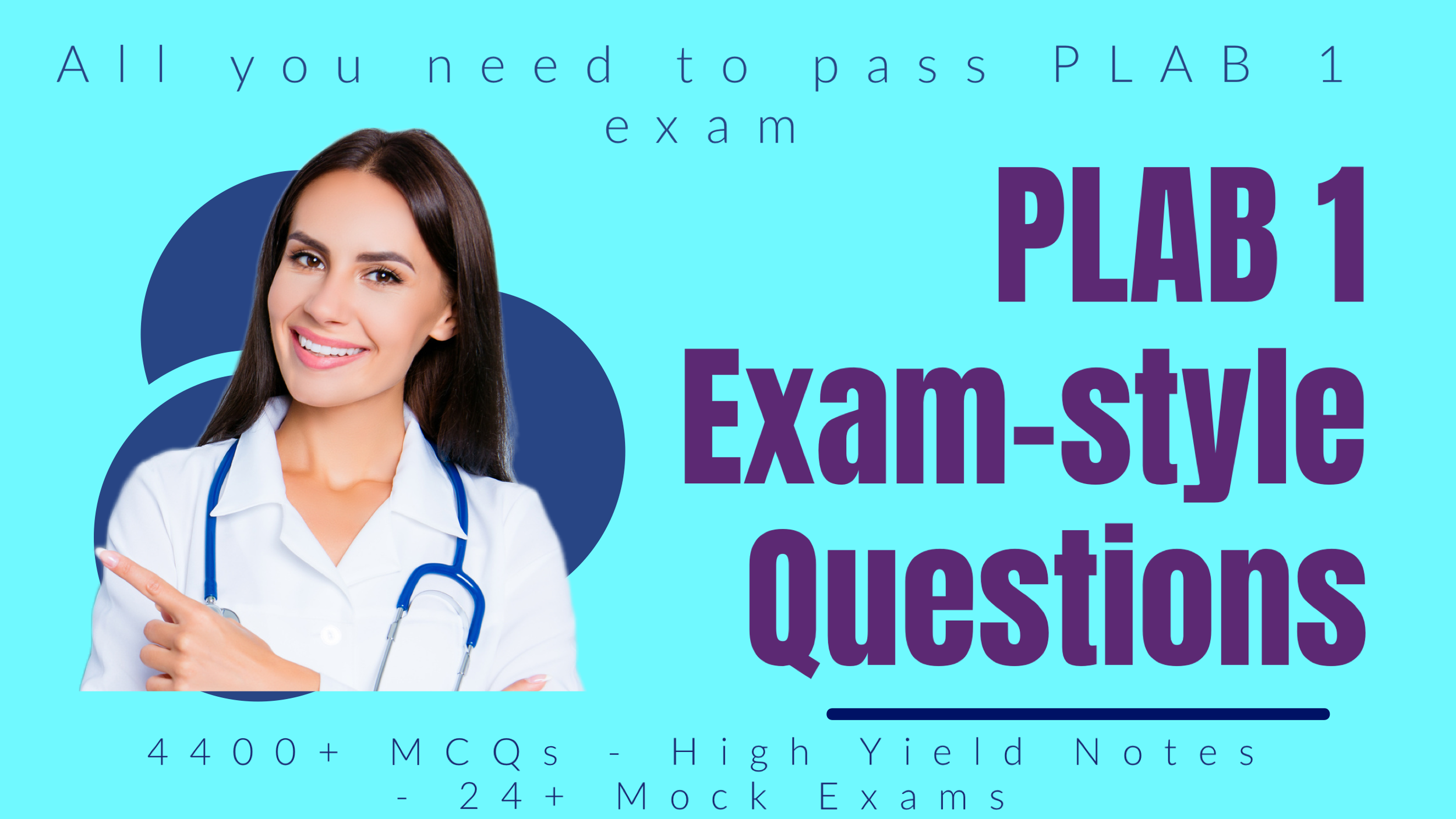Q67: Emergency Medicine : PLAB/UK(MLA)/AKT Exam style question
Today we will discuss another Q67 Emergency Medicine PLAB 1/ UKMLA exam question. This is a common topic that has appeared in the past PLAB 1 exam.
A 25-year-old man with a history of severe allergic reactions presents to the emergency department with facial swelling, hives, and shortness of breath. His blood pressure is 80/50 mmHg, pulse rate is 120 beats per minute, and oxygen saturation is 97% on room air. What is the most appropriate initial treatment for this patient?
A. High-flow oxygen therapy
B. Intravenous corticosteroids
C. Intramuscular adrenaline
D. Nebulized bronchodilators
E. Subcutaneous epinephrine
Explanation:
The correct answer is C
This patient is presenting with signs and symptoms of anaphylaxis, a severe and potentially life-threatening allergic reaction. The first-line treatment for anaphylaxis is the prompt administration of adrenaline (also known as epinephrine).
In this case, the most appropriate way to give adrenaline is intramuscular, as recommended by the Resuscitation Council guidelines. Intramuscular injection of adrenaline should be given into the anterolateral aspect of the middle third of the thigh.
Other treatments that should be initiated immediately include high-flow oxygen therapy, intravenous access, and fluid resuscitation if the patient is hypotensive. Intravenous corticosteroids may also be given to help prevent a biphasic reaction. Nebulized bronchodilators are not recommended as a first-line treatment for anaphylaxis but may be used to manage bronchospasm if it is present. Subcutaneous epinephrine may be used as a temporary measure until intramuscular adrenaline can be administered, but should not be used as the primary route of administration.
Other answer options are heavily discussed in our platform. Sign up for our PLAB or UKMLA services and get access to all the necessary materials required to pass the exam.
The above question is a high-yield exam PLAB 1 / UKMLA question-style question. At MedRevisions, We provide questions and not only explain the correct answer, we also explain the wrong answer so you will have a comprehensive understanding of the concepts that is commonly tested in the exam. On top of that, we also provide you PLAB 1 / UKMLA exam curated notes with no additional cost.
To discuss to more PLAB or UK-MLA exam questions, Join: PLAB 1 /UKMLA exam study group
At MedRevisions, we strive hard to provide the most up-to-date content available for PLAB Part 1. We constantly add exam-style questions derived from the most recent exam and also update the content to align with the latest NICE/CKS guidelines to ensure doctors pass PLAB Part 1 or UKMLA exam with ease in ONE attempt.
Past PLAB 1 candidates reviews about MedRevisions
How to use MedRevisions effectively for the PLAB 1 exam/ UKMLA exam preparation
Previous PLAB 1 or UKMLA exam guideline update
All MedRevisions recent updates
Check out this Endocrinology PLAB 1 exam style question
What we provide:
✅ 4600+ PLAB / UKMLA exam-style questions
✅ Perfectly tailored PLAB / UKMLA exam style notes
✅ 26 exam PLAB / UKMLA exam mocks
✅ Spaced repetition learning tool
Reference:
One of them is a NICE guideline on anaphylaxis: assessment and referral after emergency treatment. It covers the assessment and referral for anaphylaxis, and it recommends that intramuscular adrenaline should be given as the first-line treatment for anaphylaxis, followed by high-flow oxygen therapy, intravenous access, and fluid resuscitation1.
Another link is a NICE evidence summary on the use of adrenaline auto-injectors for anaphylaxis. It provides information on the different types of adrenaline auto-injectors available in the UK, their indications, doses, administration techniques, and adverse effects. It also advises that people who have had an anaphylactic reaction should be prescribed two adrenaline auto-injectors before discharge, and that they should be advised to carry them at all times.

